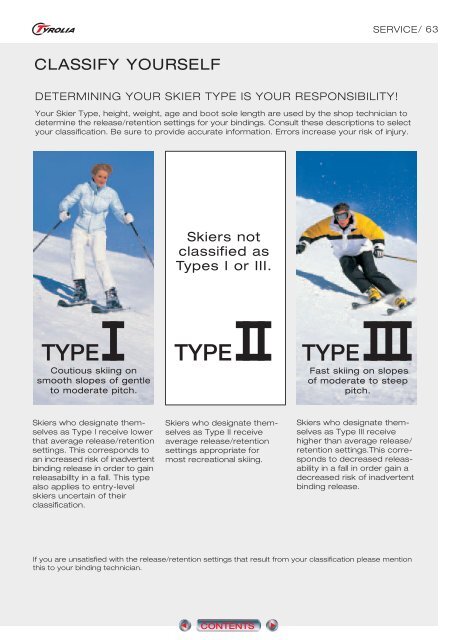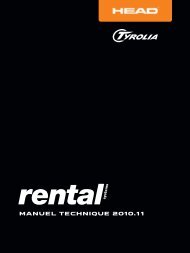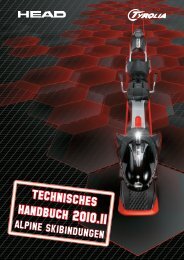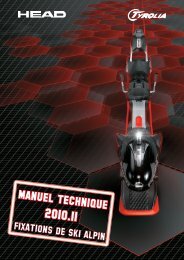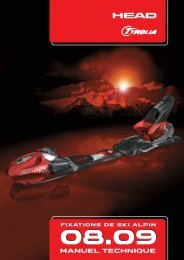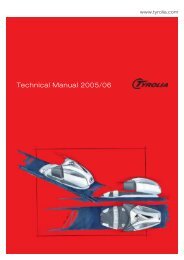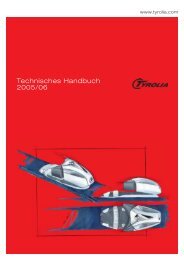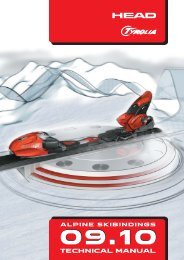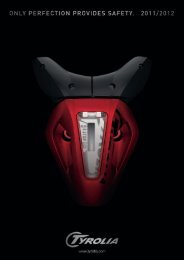You also want an ePaper? Increase the reach of your titles
YUMPU automatically turns print PDFs into web optimized ePapers that Google loves.
CLASSIFY YOURSELF<br />
DETERMINING YOUR SKIER TYPE IS YOUR RESPONSIBILITY!<br />
▲<br />
CONTENTS<br />
▲<br />
SERVICE/ 63<br />
Your Skier Type, height, weight, age and boot sole length are used by the shop technician to<br />
determine the release/retention settings for your bindings. Consult these descriptions to select<br />
your classification. Be sure to provide accurate information. Errors increase your risk of injury.<br />
TYPE I<br />
Coutious skiing on<br />
smooth slopes of gentle<br />
to moderate pitch.<br />
Skiers who designate themselves<br />
as Type I receive lower<br />
that average release/retention<br />
settings. This corresponds to<br />
an increased risk of inadvertent<br />
binding release in order to gain<br />
releasabillty in a fall. This type<br />
also applies to entry-level<br />
skiers uncertain of their<br />
classification.<br />
Skiers not<br />
classified as<br />
Types I or III.<br />
TYPE II<br />
Skiers who designate themselves<br />
as Type II receive<br />
average release/retention<br />
settings appropriate for<br />
most recreational skiing.<br />
TYPE III<br />
Fast skiing on slopes<br />
of moderate to steep<br />
pitch.<br />
Skiers who designate themselves<br />
as Type III receive<br />
higher than average release/<br />
retention settings.This corresponds<br />
to decreased releasability<br />
in a fall in order gain a<br />
decreased risk of inadvertent<br />
binding release.<br />
If you are unsatisfied with the release/retention settings that result from your classification please mention<br />
this to your binding technician.


